Scanning Around With Gene: The Almost-Lost Art of Decal Printing
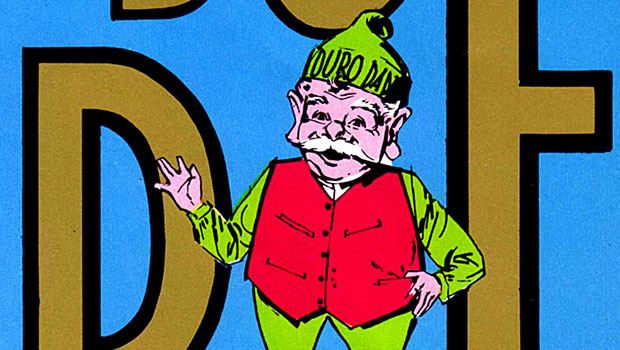
If all my dreams came true and I had unlimited time and funding, I’d spend a good deal of it prowling around Chicago visiting whatever old print shops had not yet been torn down or turned into trendy loft living. I’m not exactly sure why Chicago became America’s printing home — perhaps it was because the big catalog operations of Sears, Montgomery Ward, and Spiegel were there, or because Chicago was a great hub of railroad activity. But for whatever reason, much of the great printed material I’m so fond of has its origins in Chicago.
One such printing company, which I was thrilled to discover is still in business, is now called Duro Art Supply, but I know it more fondly as The Duro Decal Company. Over the years the business has changed and now focuses more on art supplies, but Duro still produces pressure-sensitive sign lettering of the sort you’re likely to see on boats and mailboxes. My interest, however, is in the transfer decal products the company produced throughout the 1950s and 1960s.


I thought Duro was long gone, since the company does not have a Web site. I’m not sure what prompted me to call the number on a catalog I have from 1956, but I did, even though it was listed as Sheldrake 3-3430. I just had to find the right area code (773).
Here are a couple of pictures from 1957 when the Chicago factory as new and modern, and a recent Google Maps view of the address. (You can see why I thought they were no longer in business.)
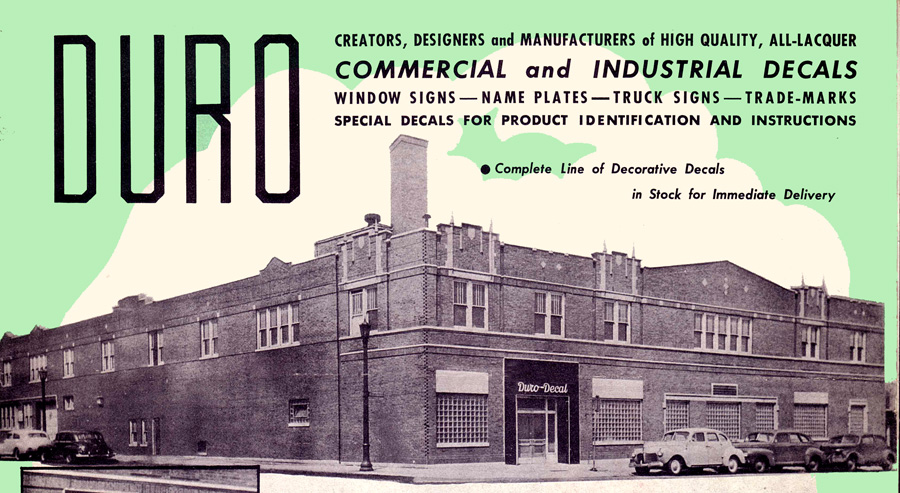

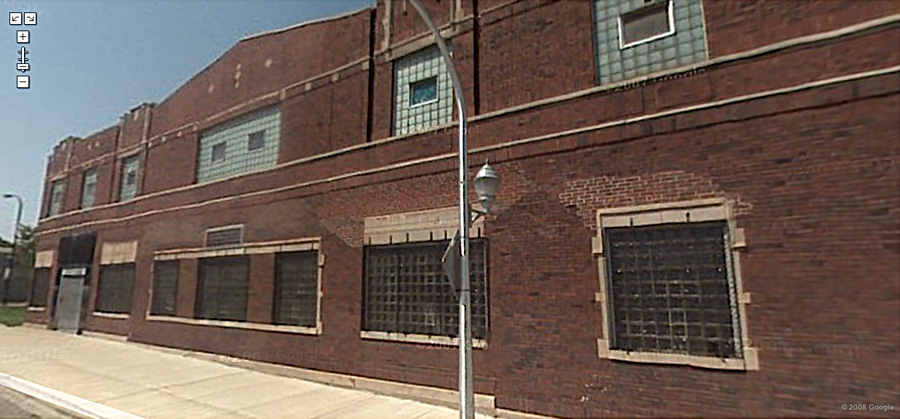
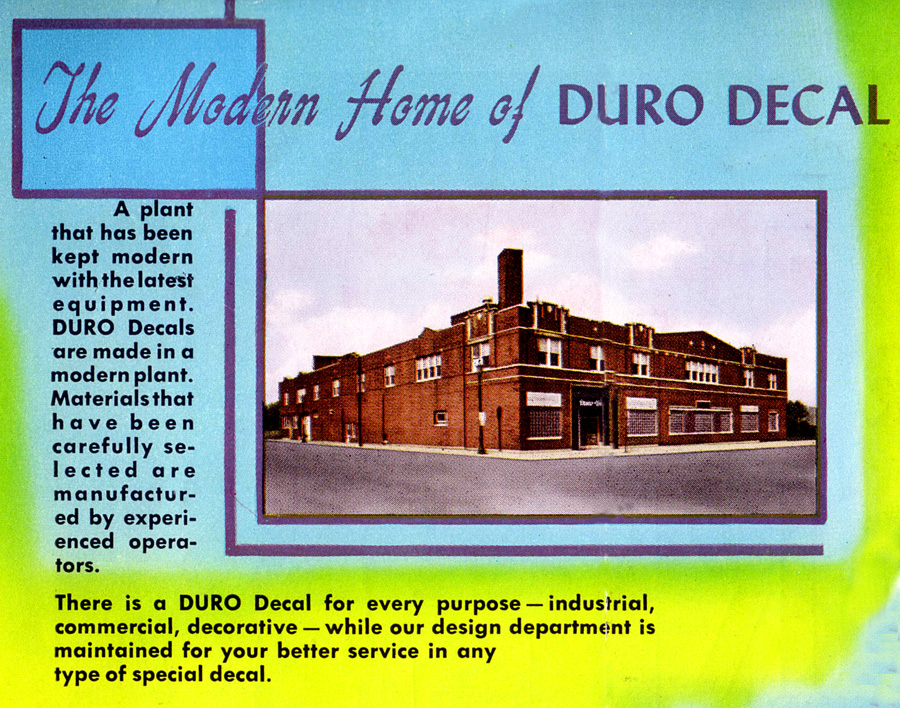
At one point, there were quite a few printers specializing in decalcomania, as it was called back then. (For more about decal printing, see my previous column). Transfer decals were a popular way of getting images on to a variety of surfaces before screen printing and adhesive paper became more practical. Here are just a few letterheads from decal printers I recently came across in a box of old printing catalogs.

But Duro’s work has stood out to me over the years. The bulk of the company’s early products were decal lettering products sold through various dealers — the sort of gold-leaf style you’d see on a private detective’s office door or a bank president’s office.
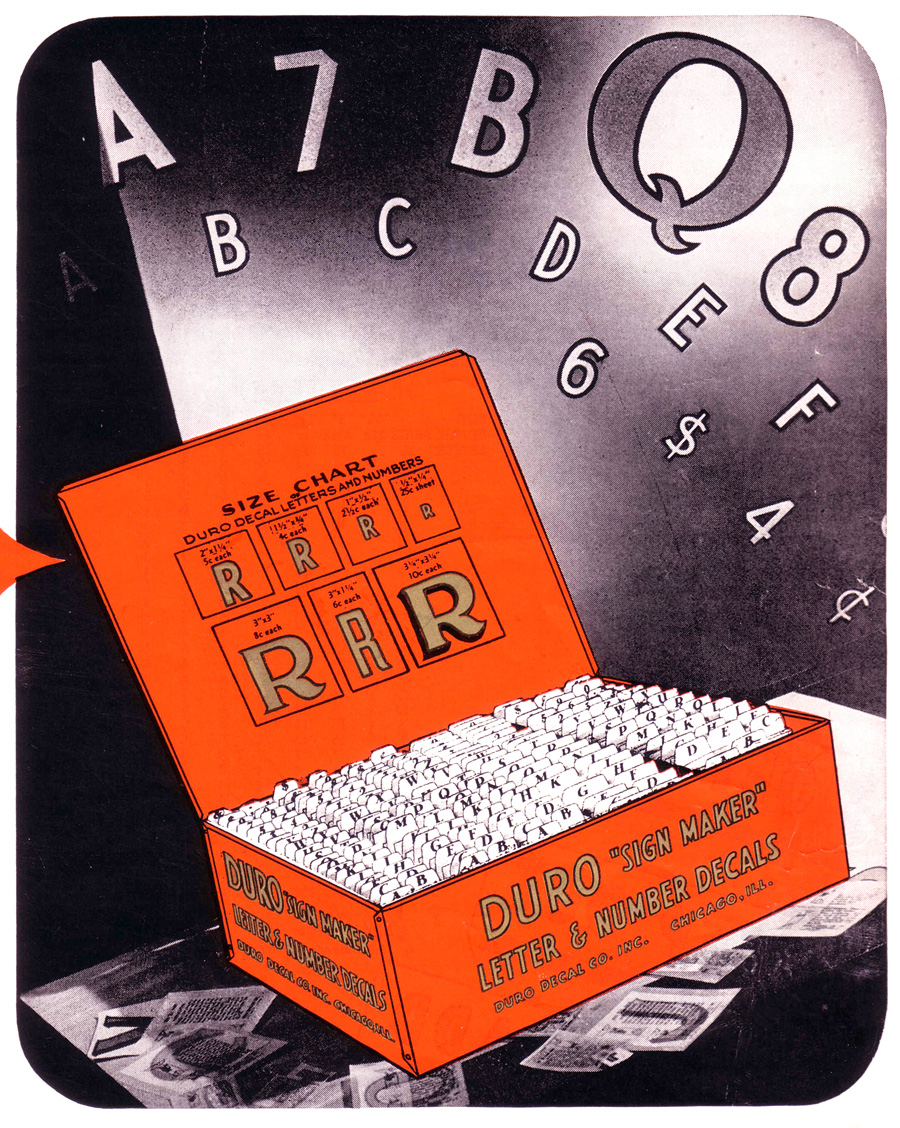

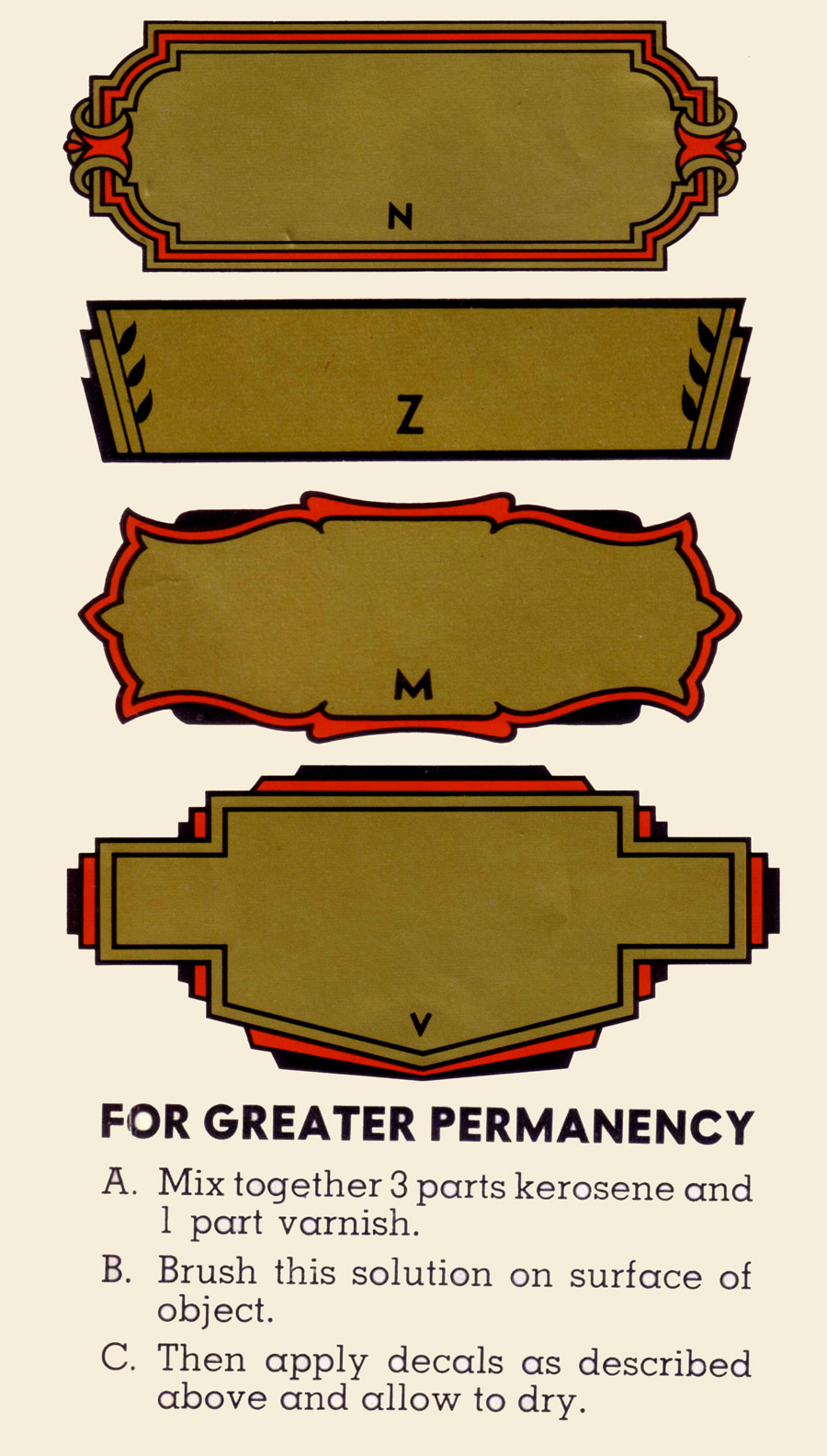
My friend Jeff Levine, a talented type designer with a passion for historic designs, has a terrific font based on Duro decal lettering (along with many other great designs, including one featuring ’60s bicycle decals) that you can find at myfonts.com. In fact, when this column goes online, I’ll send some of the source material to Jeff in the hopes it will inspire him even more.


As much as I like gold-lettering decals, my favorite form of decal art is the full-color images many companies produced as pure decoration in the home or on the car.
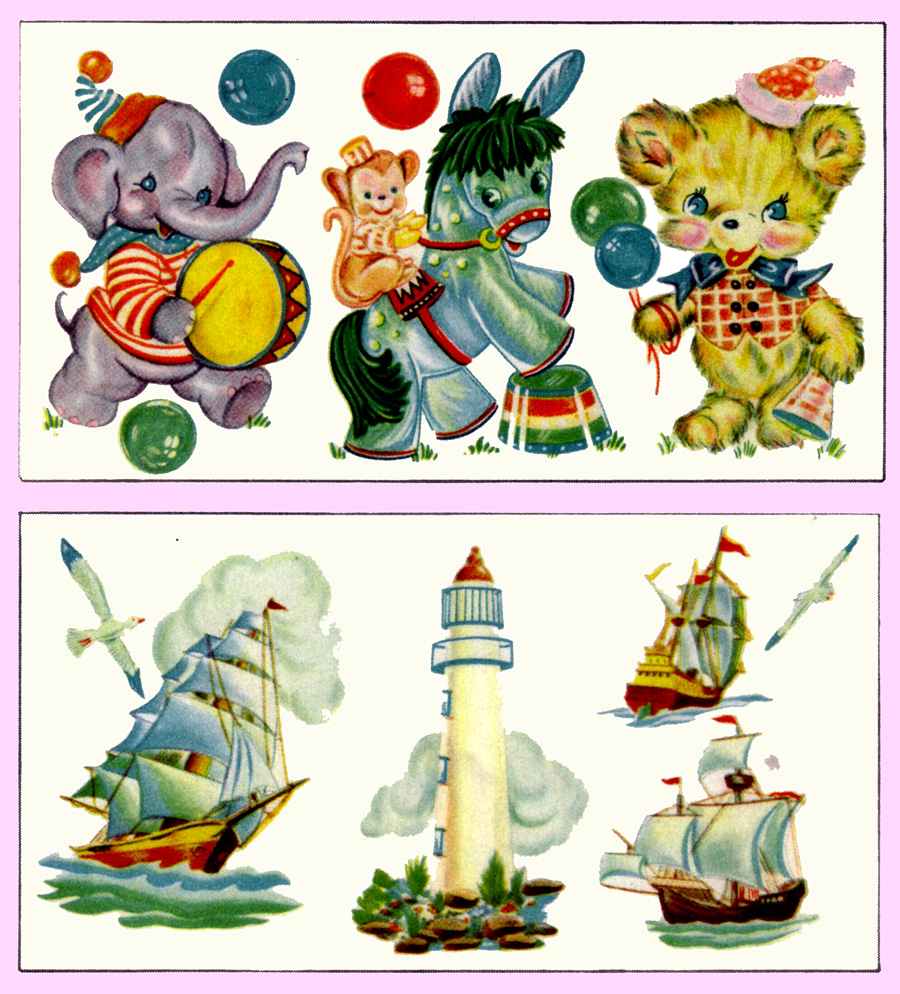
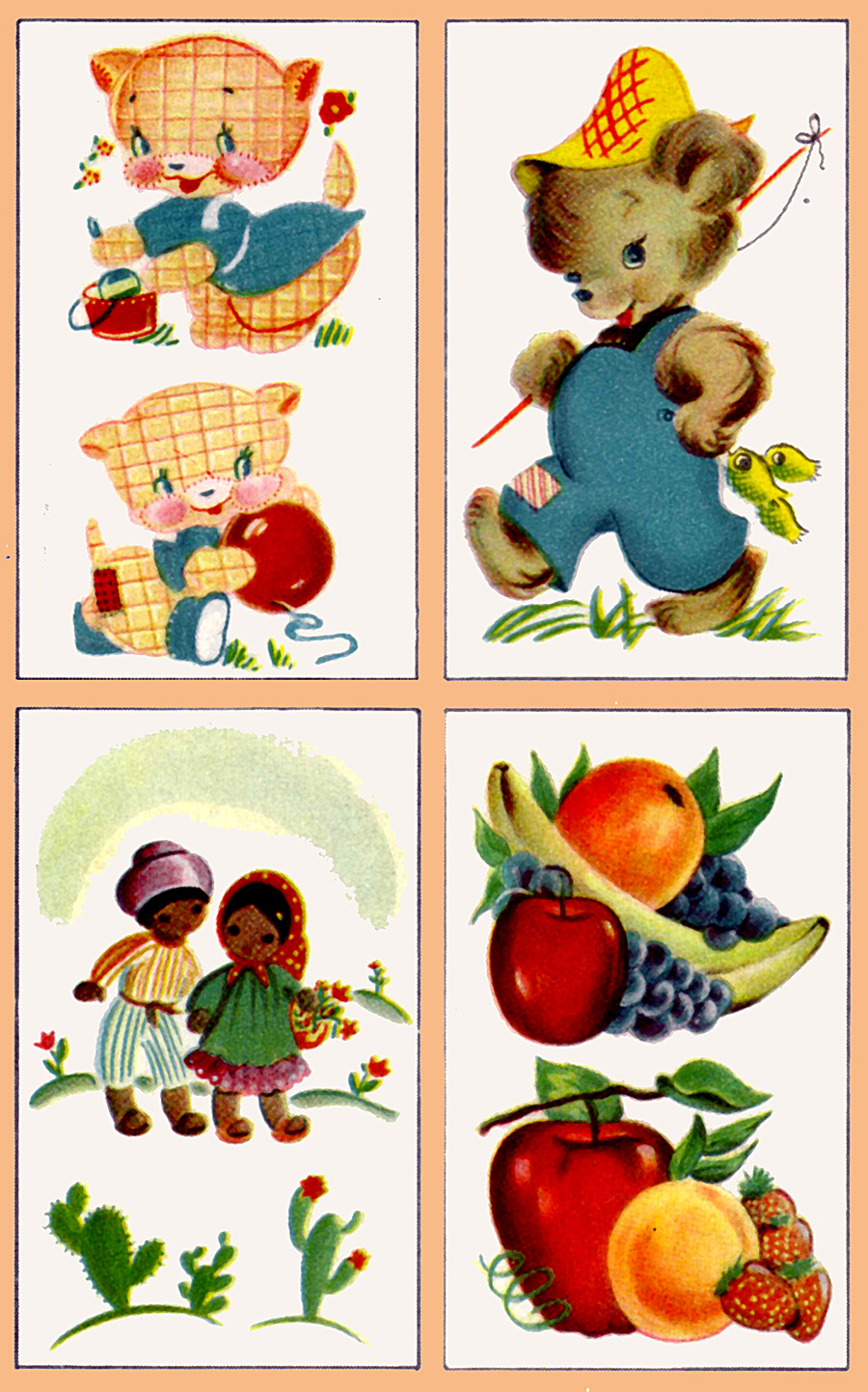

A lot of the themes for decorative decals featured fruit for the ladies and dogs and hunting for the men. When Patty and I were home shopping 12 years ago, we did run across a few older homes with decades-old kitchen decals covered in nicotine. But alas, most of this art form has long been painted over. (The company Meyercord was the most popular producer of these home designs and you can still find stock from them and Duro on eBay.) These images are all from Duro.

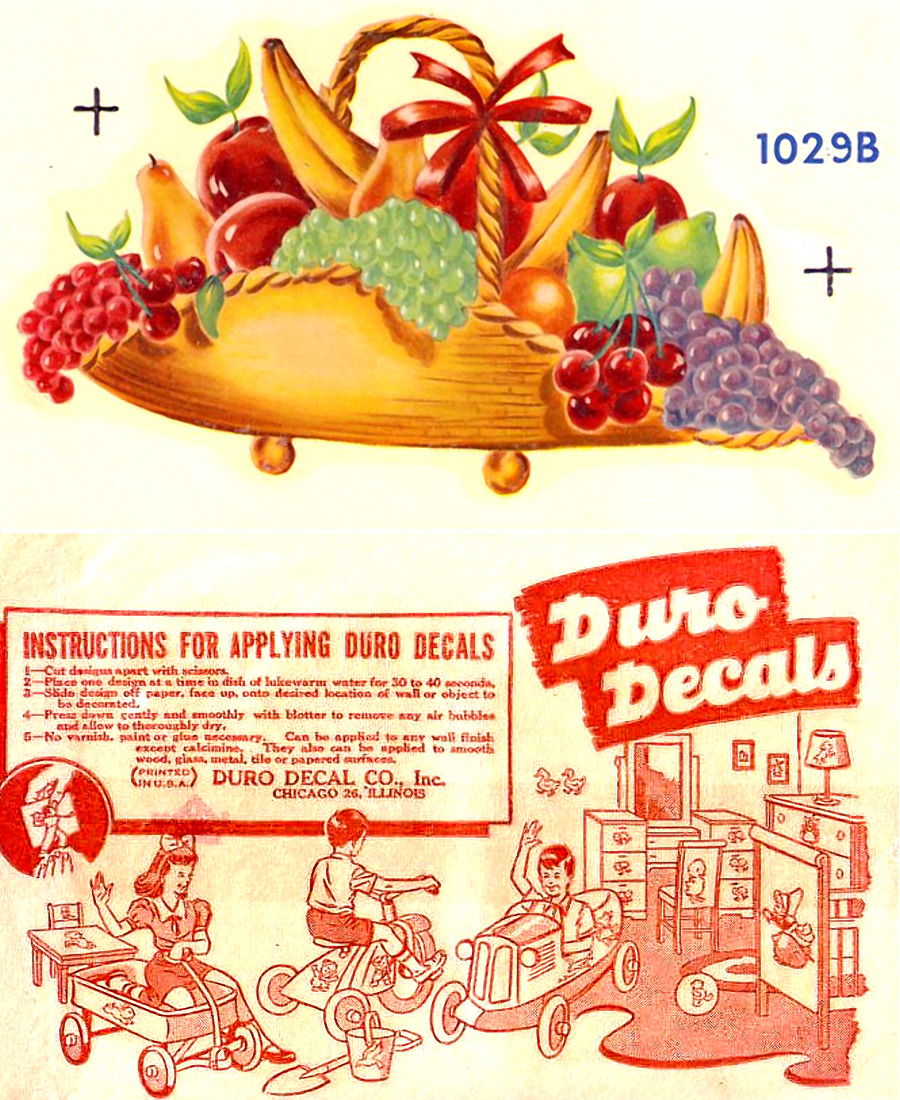

These images were printed on a clear base that, when soaked in water, becomes transferable to just about any surface. People would use them to spruce up dull cabinets, walls, mirrors, and the doors and windshields of campers and motor homes. Decals were surprisingly durable once dry, and with a little varnish covering could last for years.
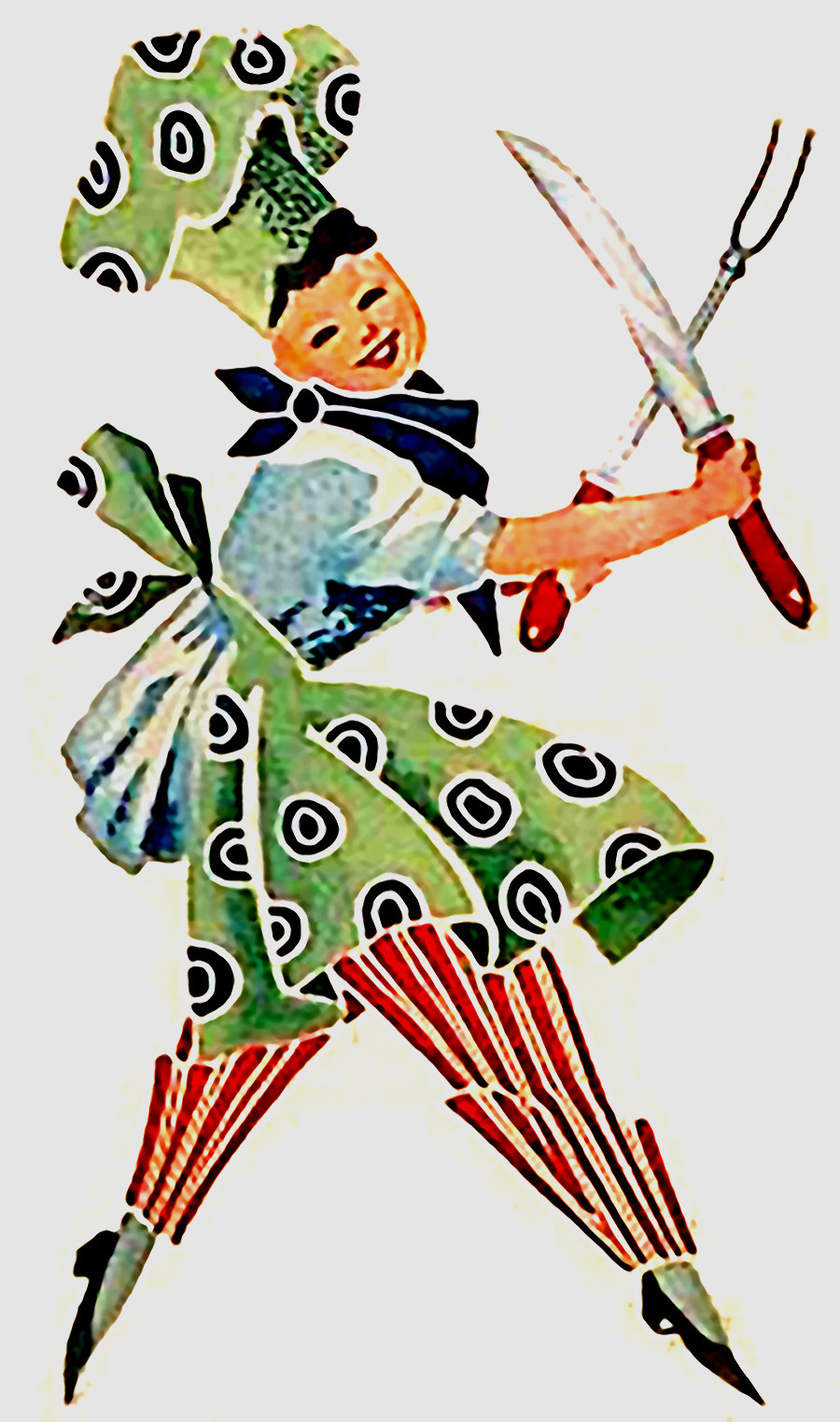
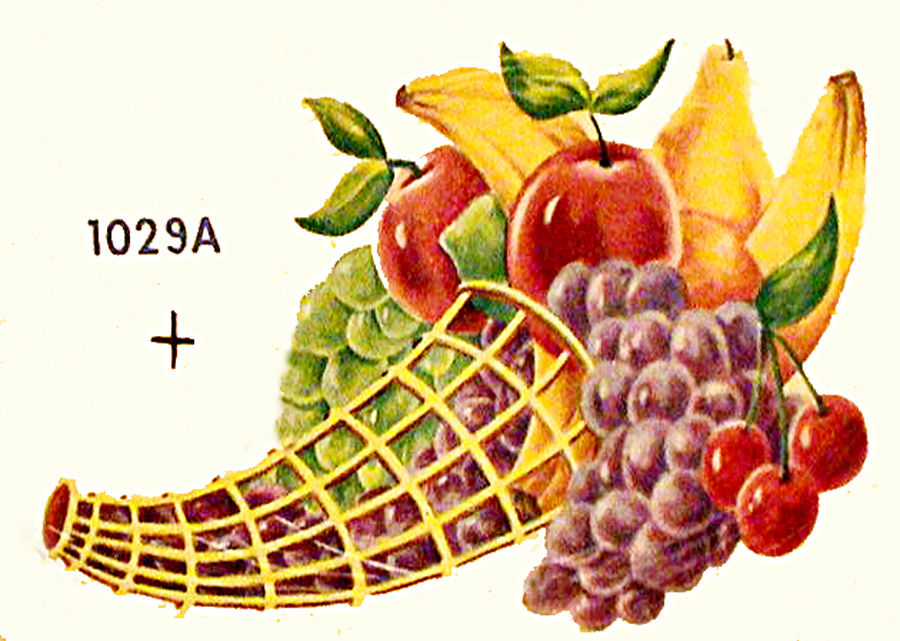
Of course, decals also played a big role in business and industry, and you still come across them today in tourist venues, though I don’t see as many station wagons with a rear window full of “places we’ve visited” decals as I did when a child.


This article was last modified on May 18, 2023
This article was first published on August 1, 2008



